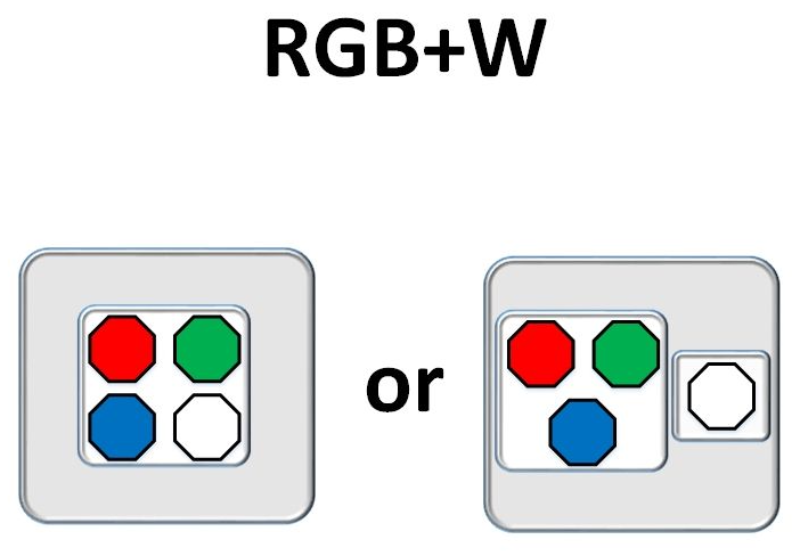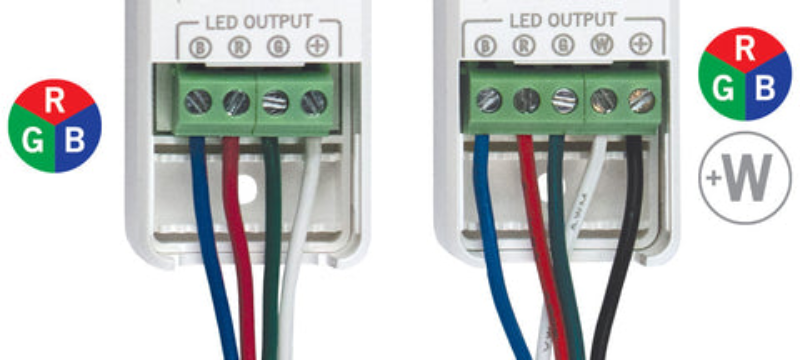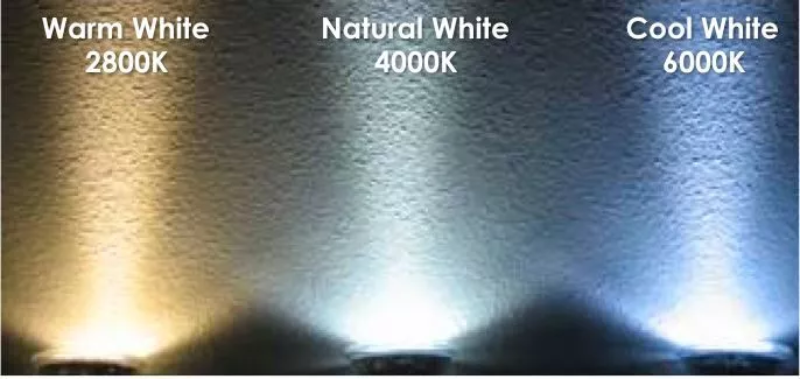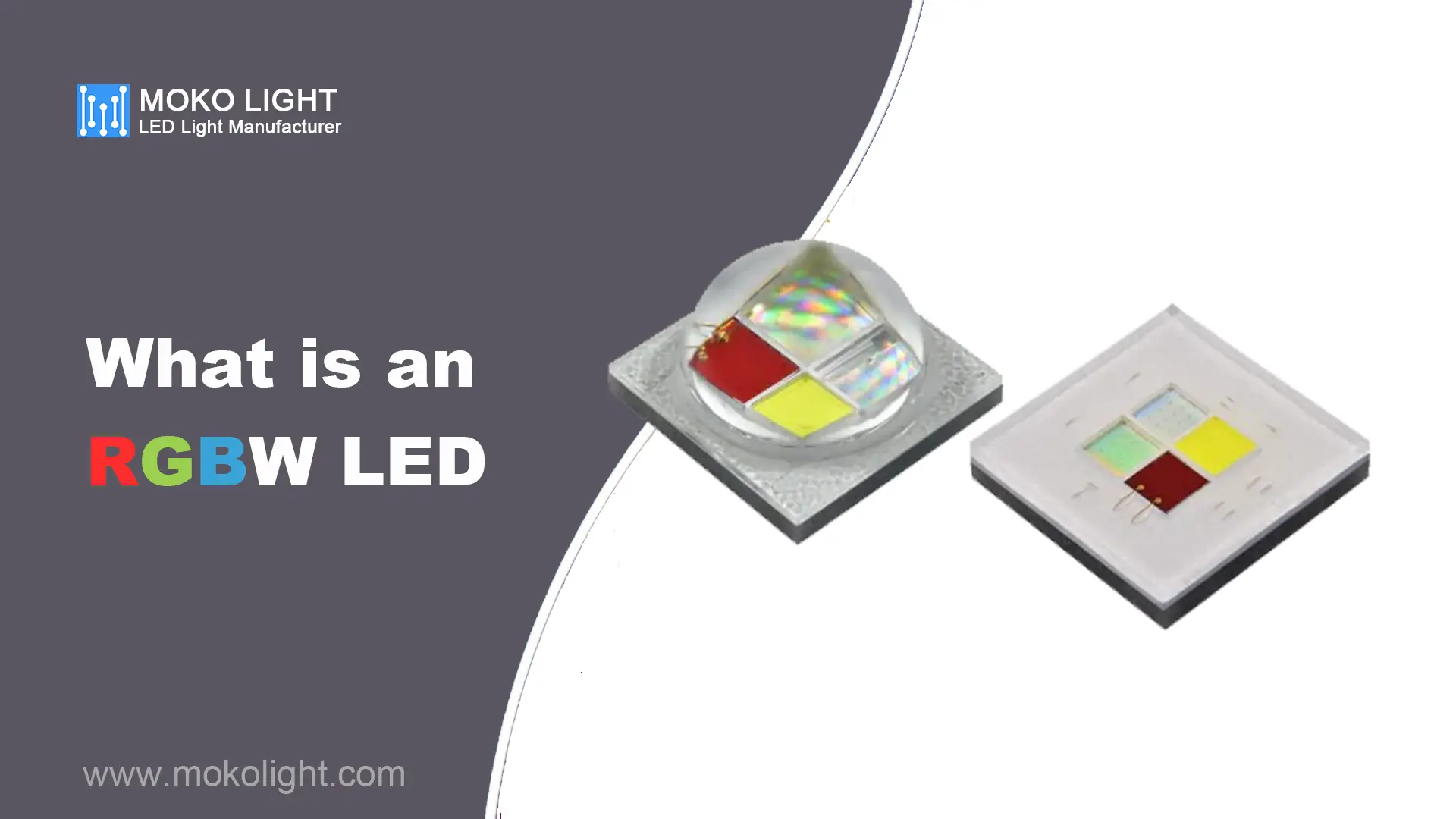In the former blogs, we have discussed RGB LED, and lead you to a new field of colorful lightening. While choosing among various RGB LED lights, you will find that RGBW LED is also a popular product. What is an RGBW LED? Why should I choose it? What are the differences among RGB, RGBW, RGBWW and others? I believe after reading this passage, you will grasp some professional information of RGBW LED. Keep reading.
Introduction
The meaning of RGBW
RGBW indicates four colors: red, green, blue, and white. So an RGBW LED can emit lights by combining these four colors. Compared with RGB LED, it adds white light. On the basis of creating colors by combining red, green, and blue, adding white light makes it possible to create more colors. Combination of red, green, and blue decides hue of the color, while white light can change the saturation of it. Besides, white light can also help to achieve many light effects and make the transition of different colors more smooth. And you can light up the white light for daily illumination. Therefore, you can regard RGBW as a premium version of RGB LED, because it has richer colors.
Structure of RGBW LED
You may have known that there are four pins of RGB LED, three controlling red, green and blue lights, and a common anode or cathode. As for RGBW, the structure is similar. It has five pins, four controlling red, green, blue and white lights and the other is for the common anode or cathode.


How to install it?
Two types of circuit connection
The above is how a single RGBW LED looks like. Then how is it connected in the circuit? You can connect the RGBW LED in series or in parallel circuit. Other devices in the circuit include drivers, controllers, amplifiers, and so on.
In a series circuit, when one of the LEDs is short-circuited, the other LEDs can still be bright. In a parallel circuit, when one of the LED lamps is short-circuited, the driving power supply will be damaged.
The parallel method only needs to apply a lower voltage to both ends of each LED lamp. But it requires a current limiting resistor to ensure that the brightness of each LED is consistent. If the current of each LED lamp bead is different, their brightness will also be different. This will affect the consistency of the entire light source. The series method can essentially ensure the consistency of the current of each LED lamp. But it needs a driving power supply which has sufficient high voltage.
From the perspective of practical application, the use of series and parallel circuits has its own advantages and disadvantages. You need to consider many factors according to the actual situations. In practical applications, LED arrays formed by series-parallel connection are often used. It can overcome or reduce the impact of the above-mentioned short circuit. The so-called series-parallel connection means connecting a few of LED lamps in series first, and then connecting a current-limiting resistor in series to form a branch. Finally several branches are connected in parallel to form a branch group.
In addition, the form of series-parallel-series can also be adopted. That is, on the basis of the formed branch groups, to connect several branch groups in series to form the entire lamp circuit. This connection method not only reduces the influence of LED lamp failure, but also turns the current limiting resistor into zero. The high-power resistors change into dozens of low-power resistors. It is beneficial to the heat dissipation of the resistance. Moreover, it makes the design of the lamp more compact.
Two types of drivers
There are two types of drivers: linear power supply and switching power supply. Linear power supply first reduces the voltage amplitude of AC power through a transformer, and then rectifies it through a rectifier circuit to obtain pulsed DC power. Finally the linear power supply filters it to obtain a DC voltage with a small ripple voltage. In order to achieve high-precision DC voltage, it must be stabilized by a voltage stabilizing circuit. The working principle of the switching power supply has two steps. First, the input terminal directly converts the rectified power into alternating current. Then under the influence of the high-frequency circuit oscillation, the switch will control the on-off of the current to form a high-frequency pulse current. With the help of an inductor, it can output a stable low-voltage direct current.

How to control it?
Because of the differences of the chips, different RGBW LEDs require corresponding ways to control. Nowadays, two principles are the mainstream: constant current reduction (CCR), and pulse-width modulation (PWM). You can refer to the former passage What Are RGB LED Lights, which provides a more thorough explanation of these two principles. And the protocols include: Phase control dimming, 4-wire (0-10V) dimming, Digital Addressable Lighting Interface (DALI), DMX, RF controlling, etc.
Phase control dimming include leading edge and trailing edge dimming. The switching devices these two methods use are different. They change the voltage input to change the current, and then adjust various colors. 0-10V dimming changes the values of the resistance to adjust. The characteristic of DALI system is that the lamps can be divided into groups. Each group has its own address, so it can achieve separate control. DMX uses digital control to change colors and light effects of up to hundreds of lights. RF controlling is achieved by the induction among the controllers and receivers. Remember to choose the right one, because different protocols can only be compatible with the right lamps. And these protocols also have their own merits and demerits and are suitable for different circumstances.
For example, RF remote controlling is usually used in small space, like a room. Common RF remote controlling can only control the LEDs within 30 meters. On the contrary, protocols like DALI and DMX can fulfill the need to control hundreds of lights at a large arena.

Advantages and disadvantages of RGBW LED
- It can decorate your places with a full-spectrum light. With RGB lights,we can already produce 16,777,216 colors. It is not so hard to imagine how many colors RGBW can make. And the magic of RGBW is that it can change the hue of color on the basis of the colors RGB creates. In this way, it can also increase the accuracy of colors. Using RGBW makes it easier for you to get the exact color you want.
- You can get a purer and brighter white light. RGB LED lights can create white light by combination. But it is sure that with a white light, the white color will be purer. And when setting the brightness to the maximum, an RGBW LED can be 25% brighter than an RGB LED.
- More light effects waiting you to explore. White light also makes it possible for a more smooth transition between deeper and lighter colors. So the changing of colors won’t be very abrupt.
- RGBW saves your energy. RGBW is a member of the LED family, so it also has the feature of energy-saving. And this comes from the high working efficiency.
- RGBW has a long lifespan. Not only does it emit less heat, but it can also stand higher temperature because of the addition of white light. Different colors have different temperatures, and designers of RGBW didn’t forget to consider this point. So it can create more colors without negative effects. And this accuracy achieves a longer lifespan of RGBW.
- It is nothing different for installation. As what I mentioned above, the structure of some RGBW LED is that it has a 5-in-1 chip and 5 pins. This means you just need to connect one more wire, which is easy to understand. The control of RGBW is also similar to that of RGB LED.
Of course, it costs to get an RGBW with these advantages, which is more expensive than RGB LED. It can be seen as one of its disadvantages. If you are just looking for some lights that can change colors, just like some PC players do, RGB LED can fulfill your basic needs. RGB LED helps when you need a large amount of colorful lights in many parts of your project. For example, for decorating your e-sport room, there are so many hardware components. In this occasion, many people will choose to buy RGB LED to save the costing.
RGB vs RGBW vs RGBWW vs RGBCCT vs RGBIC
Besides the RGBW we are talking about, there are other types of RGB lights which can make you confused. They look like each other, but what makes the difference?
First you need to be clear about the abbreviations:
RGB: red, green, and blue
RGBW: red, green, blue and white
RGBWW: red, green, blue, white, and warm white
RGBCCT: CCT is Correlated Color Temperature. So this word means red, green, blue, and different temperatures of white.
RGBIC: IC means Independent Control, indicating a chip that can control colors independently.
I guess you have already known the biggest difference, that is the colors these lights contain. And using distinctive technology, colors these lights can create also vary.
RGBWW provides white and warm white for combining to create more colors than RGBW.
RGBCCT is even talented than RGBWW, as it can choose the spectrum of white light, so more colors are available.

As for RGBIC, its added chip enables to show one more color besides the original RGB colors. So if you get an RGBIC strip, you can make it show like a rainbow.

How to choose an RGBW LED
Here are some things you need to pay attention when choosing an RGBW LED product.
- Types of the chips: popular chips in the market include SMD5050, SMD3528, SMD2835, etc. Some vary in the size of the chip, others have different quality because they apply different technique. The price and effect vary accordingly.
- What kind of controllers: like I mentioned above, different controllers apply different protocols, and they may not be compatible with each other. So before buying you need to be clear about what kind of controller the RGBW product uses, what is the distance it can control, what kind of arena is this controller suitable for, etc.
- What kind of RGBW LED strips: One common product is the RGBW LED strip. When it comes to RGBW strips, they have many classifications. For example, there are strips that use 12V or 24V; hard and soft ones; strips with different waterproof level… Pay attention to the detailed description and choose according to your needs.
About Mokolight
If you still have something that you are not so clear about, come and advise us! We are sure to pick up the exact product you want for your ideal lightning. And the reason lies in the facts that we are a professional manufacturer with 16+years of experience. We produce LED products in our own factory and the quality of them are guaranteed by various certifications. If you learned something after reading this passage, click the “contact us” right now and start making your plan come true!




